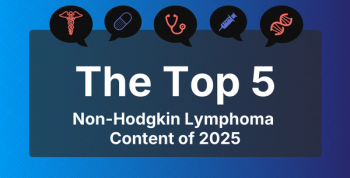
Is a Third Mumps Vaccine Useful in Outbreaks?
What can a university do when students are getting the mumps, even though they were vaccinated as children? The CDC examines what happened at the University of Illinois.
Most parents are familiar with the schedule for the vaccine that prevents measles, mumps, and rubella, known as the MMR: a child gets the first shot at the 1-year well visit and the second before starting kindergarten.
But is a third vaccine, given years later when that child enters college, ever recommended? A CDC review of an outbreak of mumps last year at the University of Illinois Urbana-Champaign offered insight into a little-known reality: sometimes immunity wanes, leaving those in close quarters at risk.
On May 1, 2016, Illinois public health officials alerted CDC to the outbreak of mumps, a viral disease that causes high fevers and swelling of the parotid and salivary glands. In time, officials tallied 317 cases between April 2015 and May 2016, including a number of cases among those who’d had both regular MMR vaccinations (officially, the CDC recommends the first at 12 to 15 months and the second between 4 and 6 years old).
To halt the outbreak, state and local health officials and the University medical staff recommended third dose. As noted in an article published today in CDC’s Mortality and Morbidity Weekly Report, “No formal recommendation for or against the use of a third MMR dose has been issued by the Advisory Committee on Immunization Practice.”
However, CDC did have guidelines on giving a third dose in select circumstances: when the outbreak occurs in settings where people are in close contact, such as a college campus; when it’s clear that the virus is spreading to those who had 2 doses, and “when traditional control measures fail to slow transmission.”
In other words, the third dose is given when nothing else works.
The first case appeared to be a 21-year-old man who fell ill April 9, 2015, although he didn’t test to confirm mumps. Over the next 2 weeks, 5 more cases were identified. In every case, the patients had received 2 MMR doses as children. When a seventh case was confirmed with testing, it turned out all the students were “linked” to the same academic program.
Most universities require students to have up-to-date vaccinations before they enroll. The University made sure that those who’d come in contact with the mumps cases had updated vaccinations, and records showed that more than 97% of the students had 2 MMR doses already.
The caseload kept climbing in the summer of 2015, when the number hit 70 by July 31, 2015. The University sent notices targeting more than 5000 students and staff born earlier than 1957 that a new round of vaccinations would occur, and a total of 8200 vaccinations were given at 5 health centers from August 6-27, 2015. Another 3300 doses were given during the fall and spring semesters.
Of the cases reported through May 27, 2016, the average age of the patient was 20 years, with a range of 16 to 55 years. Among those who got sick, 50 cases (16%) got the third MMR dose, although 45 of them received it during the outbreak and were likely exposed before building immunity. Another 232 (73%) had received 2 doses. Another 12 (4%) had received 1 dose, and 7 cases (2%) were unvaccinated. Another 16 (5%) had unknown vaccination status.
The August vaccinations were recommended when it was clear the outbreak was continuing, and the new semester would bring students not previously on campus and thus potentially at risk. Like most colleges, the University vaccination enforcement doesn’t start until students try to register for classes.
Use of a third dose in outbreaks has a mixed record, in part because sometimes the vaccinations have occurred too late to stop transmission. Deciding whether to require a third dose can be a tough call, because of cost and potential harm from the vaccine, the CDC report said.
“Although more evidence of its effectiveness is needed, a third dose of MMR vaccine may be considered as a control measure,” in cases that meet the conditions seen at the University. While cases continued to climb The outbreak was declared over in July 2016. Officials note that the case count fell in the months immediately after August 2015. “Further evaluation is needed to determine if the reduction was a result of the recommendation for the third MMR dose,” the report states.
Reference
Albertson JP, Clegg WJ, Reid HD, et al. Mumps outbreak and a University and recommendations for a third dose of measles-mumps-rubella vaccine—Illinois, 2015-2016. MMWR. 2016;65(29):731-734.
Newsletter
Stay ahead of policy, cost, and value—subscribe to AJMC for expert insights at the intersection of clinical care and health economics.








































